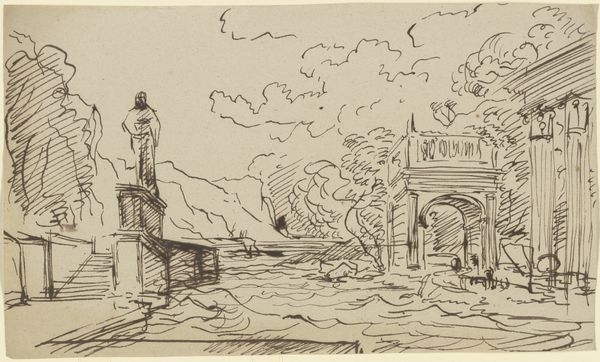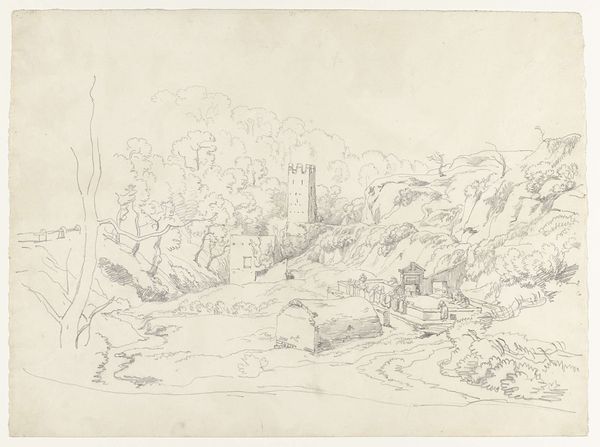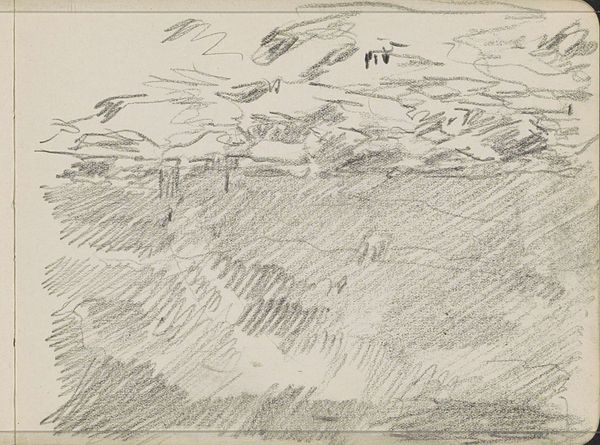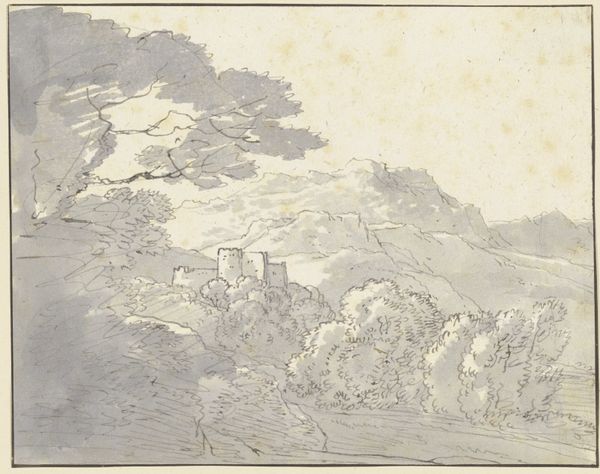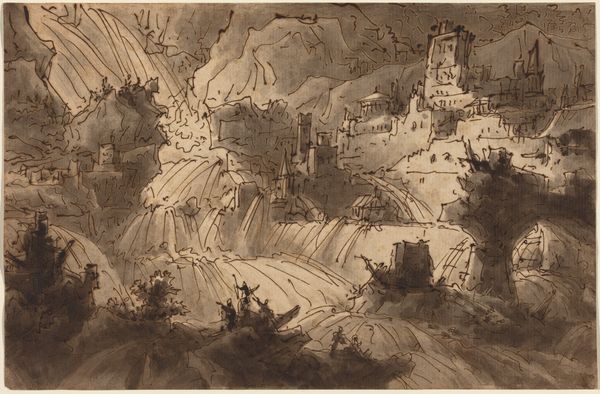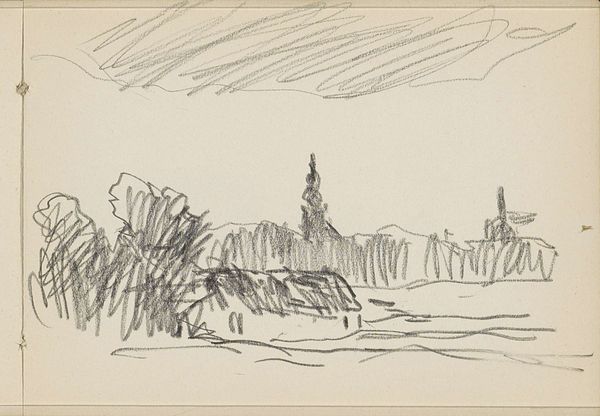
drawing, ink
#
drawing
#
landscape
#
ink
#
romanticism
Copyright: Public Domain
Curator: This is "Landscape with a Stormy Sea and a Castle" by Franz Kobell, likely created between 1800 and 1805. The work, rendered in ink, showcases Kobell's interpretation of Romanticism. It's currently held in the Städel Museum. Editor: What strikes me immediately is the turbulent atmosphere he’s captured. The way the dark washes of ink define the roiling clouds and the rough waves—there's a palpable sense of unease. Curator: Absolutely, that sense of the sublime, the awe-inspiring power of nature, is central to the Romantic movement. Here, Kobell presents nature as both beautiful and potentially destructive, an idea explored by many artists and writers of the time responding to periods of revolutions. Editor: Look at how the artist uses line quality. The spindly tree in the foreground and the angular rocks lead your eye to the distant castle, seemingly menaced by the storm. Curator: Yes, and notice the inclusion of that castle on the hill. During this time castles are seen in all states of repair - but often signal feudal power. The inclusion could indicate a nostalgic nod to a feudal power, while also questioning it. Editor: It’s quite effective. Speaking of, the values create great contrast. The dark foreground grounds the lighter, turbulent sky and ocean, framing the implied narrative in a way that feels… precarious. It makes the storm that much more potent. Curator: Indeed. And let's also acknowledge the influence of burgeoning landscape theory on Kobell's contemporaries. People, then, were rethinking our relationship with the physical world, challenging the classical order with a more visceral understanding of their surroundings. Editor: Considering it's ink on paper, the dynamic range is quite impressive. It feels less like a detailed record of a specific place and more like an evocation of feeling, and that aligns with how artists at the time approached ideas of visual impact, not necessarily mimesis. Curator: Well, the socio-political undercurrents combined with its masterful technical handling clearly position it as more than just a simple depiction of a landscape. It’s the aesthetic embodiment of an era grappling with massive societal and environmental change. Editor: Agreed. Kobell really captured something essential here. There is more to landscape art of this period than immediately meets the eye.
Comments
No comments
Be the first to comment and join the conversation on the ultimate creative platform.

